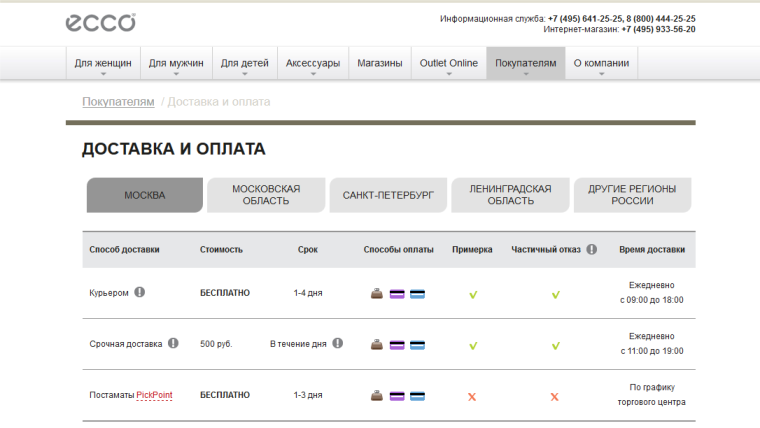5 + 5 ways to increase conversion using psychological techniques. Part 1

How to turn website visitors into your customers?
The secret to successful sales is very simple: it consists in understanding the psychology of the client, how he thinks and what he wants. We offer you 10 ways to motivate a client, which are based on relevant psychological research. They explain how to influence the maximum number of visitors so that they start using your product. Below are the first five of them.
1. Help customers overcome their “fear of doing things” by setting minimum requirements.
A study by Professor Robert Cialdini showed that adding the smallest amount to the list increased the amount of donations to the American Cancer Society by 78%. That is, people were afraid to pay a lot at once, but they were ready to sacrifice small things.
Remind your customers how easy it is to start working with you (“Use your product for free for the first month!”) To help them overcome their “fear of action.”

Source - Netflix
Or if you do not have freemium, then you can promise a refund if something does not like or there will be no result.

Source
2. Highlight your customers!
During a study of behavioral patterns in voting, scientists came to the conclusion that people randomly designated as “politically active” were 15% more likely to vote.
Despite the fact that they were chosen by chance, it was their identification among other people that predetermined their further actions. Highlight your customers, make them part of the VIP-group, and the actions will correspond to their characteristics.
On this basis, entire businesses are created. For example, the KupiVip online store , where super brands are available to women at low prices. But they will not agree to a lower quality. Images of their customers are created by car dealers and manufacturers of Apple equipment. Calling a certain group of people their typical customers, they leave people no choice.

3. There are three types of users
Experts in neuroeconomics conducted studies according to which all buyers can be divided into three types: hunks, spenders and average buyers.
If you want to sell a product to a typical hunks, be sure to focus on what is part of a product, use the purchase method on credit ($ 100 per month for a year, not $ 1200 immediately). In addition, reduce the amount of small additional costs (for example, for delivery).

The source
Tranzhirs are actively buying on the wow-effect and immediately, so try to increase their average check and offer several products in addition to what they were originally interested in.
4. Highlight your strengths while recognizing weaknesses
According to information provided by social psychologist Fiona Lee, users are more likely to trust those companies that recognize their “strategic flaws” than those that blame someone else for their problems (even if it really was!).
The researcher concluded that clients are loyal to companies that from time to time admit their mistakes, as they really try to correct the shortcomings, instead of looking for the problem in others.
How to: We can do better!
How wrong: This is not our fault!
For example, report your minor flaw, which is not critical for the user, but which allows them to understand that you are soberly evaluating yourself.
For example, Ecco honestly write about all the details of delivery, recognizing the advantages of some options, as well as the minuses of others.

Source
Another simple example: your bundles of white paper are excellent in density, print quality, and whiteness. But, nevertheless, they are not universal and not compatible with such types of printers. For them, it is better to choose paper from your other line.
5. Be persistent, but in moderation
It is the persistence of company representatives and the scarcity of goods that drive successful sales. According to a Howard Leventhal study, users tend to block persistent messages if they are not given clear information about the next steps.
Leventhal proved this theory with a tetanus vaccine, and came to the conclusion that people who received information about the next steps decided to be vaccinated 25% more willingly.
Draw for yourself and for the client a chain of actions that will lead him to the result. If the client does not understand the way of interacting with your product, the probability of his leaving the site is more than 90%. Refer to the examples of the SaaS service MailChimp, which step by step draws on its website both the process of creating an email and the process of sending it.

Source
Remember the various tests where you are told a) how many questions will be in it, b) how much time you have, c) draw a progress bar, d) report in quantitative terms how many questions are left to the end.
A source:blog.kissmetrics.com/wp-content/uploads/2014/07/ConvertMoreCustomers.jpg
Only registered users can participate in the survey. Please come in.
Which of the above psychological techniques do you use in your work?
- 14% promise to return the money 15
- 14% Offer a free trial period 15
- 6.5% emphasize that the product is for this particular category of people 7
- 14% Talk about strengths, recognizing weaknesses 15
- 1.8% Targeting frugal users 2
- 5.6% Play wow-effect 6
- 7.4% Provide follow-up information 8
- 36.4% None 39
